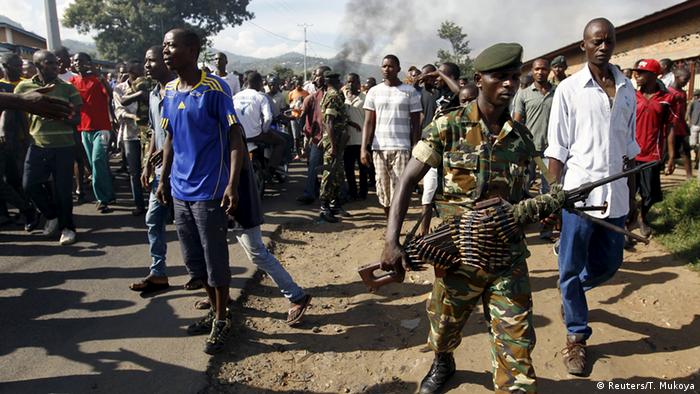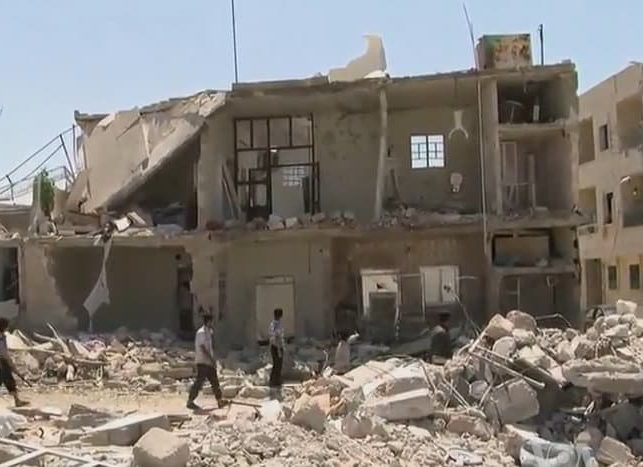Amidst unrest and war across Africa and the Middle East, a new report on risks to business in different nations paints a sobering picture.
Only 10 African and Middle Eastern countries are considered low risk for businesses, according to the report by Control Risks, a global risk management consultancy. Nearly three times as many countries – 27 – pose an extreme or high risk to companies operating within their borders.
Globally, insurgency is reshaping political and business affairs, according the report. In both business and politics, the established order is being disrupted by forces that appear suddenly, the report said.
Nowhere is that more clear than in Africa and the Middle East, according to Control Risks’ evaluation of political risk in 68 countries in the region. The rating is based on the likelihood that instability or interference or other factors such as corruption or infrastructure could negatively affect business operations.
Extreme risk in Burundi, CAR and Somalia
In sub-Saharan Africa, only three countries were given a rating of “extreme” risk: Burundi, Central African Republic, and Somalia.
Burundi has experienced widespread violence and the report predicts that the political and security environment will worsen in 2016, especially in Bujumbura, the capital. With the government unwilling the make concessions to its opposition, the report asserts that the risk of a coup will increase.
Meanwhile, Somalia and the Central African Republic are attempting to emerge from years of violence but remain unstable, the report said.

Violence in Burundi
Piracy off East Africa coast declines sharply
It said a return to high levels of piracy off the coast of Somalia is unlikely in 2016.
The report said anti-piracy measures off the coast of Somalia have been effective, reducing the amount of activity to just one percent of its peak in 2011. But that might not last.
“Governments and shipping companies face the challenge of responding to the diminished threat without unraveling the work that helped to curtail the problem,” the report said, noting the paradox that the success of anti-piracy efforts could well lead to their being diminished.
However, the report cautioned about continuing offshore kidnappings and high jacking off the coast of Western Africa.
U.S. may increase anti-terror efforts in sub-Saharan Africa
On the terrorism front, the report predicts that U.S. president Barack Obama, in the final year of his term, will be more assertive internationally, including lending more support to counter-terrorism efforts in sub-Saharan Africa.
Boko Haram, the Nigerian militant group, is coming under more pressure from multiple governments and is likely to be forced to relinquish territory and instead rely on hit-and-run attacks, according to the report.
Nigeria was one of 16 countries that received a “high” risk rating. The report said the pending end of a program of amnesty for militants, and falling oil prices could worsen tensions.
Other countries with a high risk rating include: Chad, Comoros, Congo, Democratic Republic of Congo, Cote d’Ivoire, Equatorial Guinea, Eritrea, Gambia, Guinea, Guinea-Bissau, Lesotho, Niger, South Sudan, Sudan, and Zimbabwe.
Twenty-three nations pose medium risk
These 23 countries were given a medium risk rating: Angola, Benin, Burkina Faso, Cameroon, Djibouti, Ethiopia, Gabon, Ghana, Kenya, Liberia, Madagascar, Malawi, Mali, Mozambique, Rwanda, Sao Tome, Sierra Leone, South Africa, Swaziland, Tanzania, Togo, Uganda, and Zambia.
Only six countries – Botswana, Cape Verde, Mauritius, Namibia, Senegal, and Seychelles – received a low risk rating.
Middle East turmoil evident in ratings
The report also reflects political unrest and war in Northern Africa and the Middle East, where only four countries were rated low risk.
Three war-torn countries – Iraq, Syria, and Yemen – were rated extreme risk.
High-risk countries were Algeria, Egypt, Iran, Libya, and the Palestinian Territories.
Medium risk countries were Bahrain, Jordan, Kuwait, Lebanon, Mauritania, Oman, Saudi Arabia, and Tunisia.
Israel, Morocco, Qatar, and the United Arab Emirates were rated low risk.
By comparison, the United States is ranked low risk while China and Russia are ranked medium risk.
Globally, Control Risks said, the risk outlook is the worst it has been in the past decade. It cited, terrorism, instability in the Middle East, cyber-risk and Chinese economic problems as factors creating a “potentially more volatile world in 2016.”

